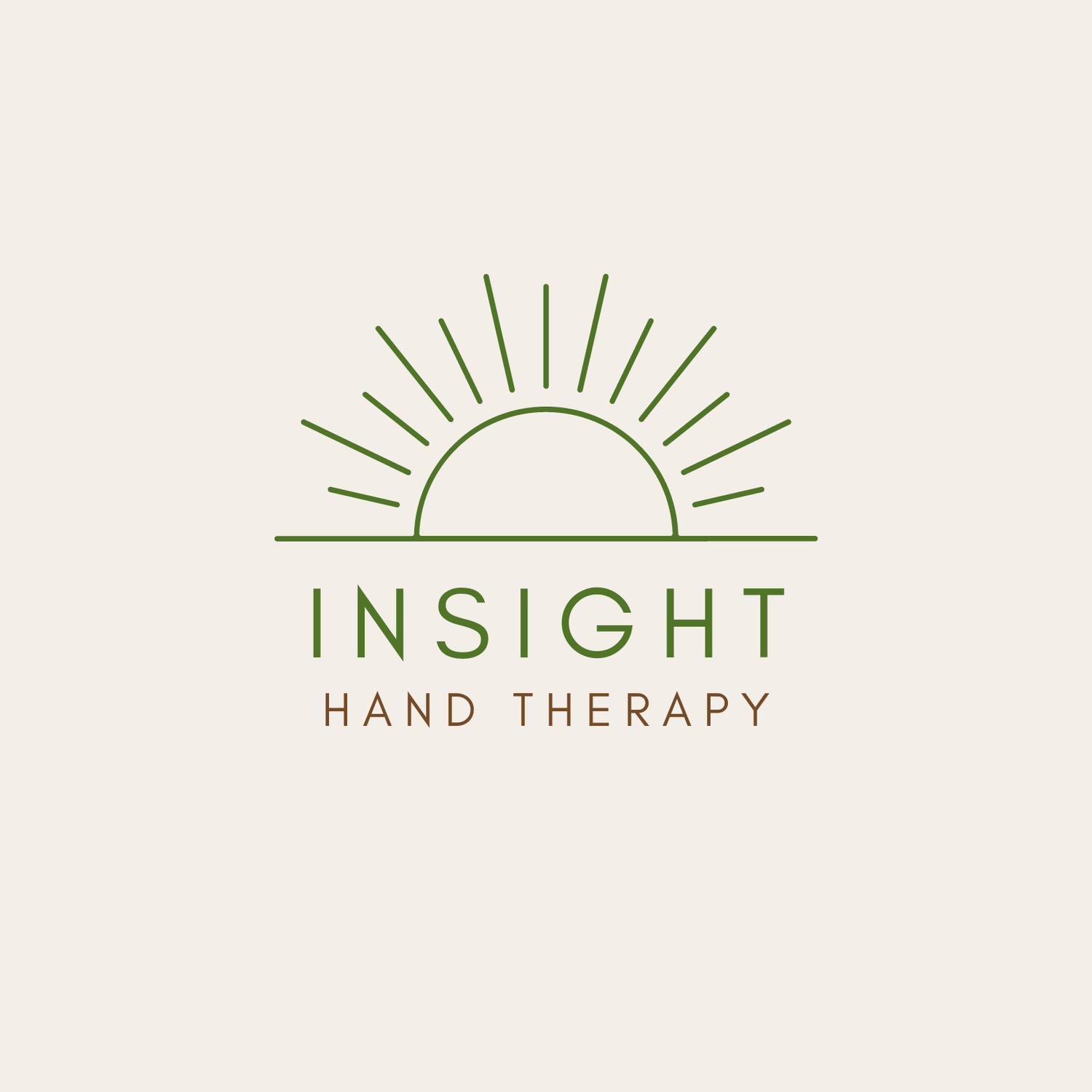Tips on caring for your baby with De Quervains (mummy thumb!)
Insight Hand Therapy is a Hand Therapy Clinic located on the Gold Coast, providing specific assessment, treatment and active rehabilitation for hand and upper limb injuries / conditions. Telehealth hand therapy services are also offered for those who do not live on the Gold Coast or Northern NSW, or for those who are unable to attend a face-to-face appointment. The below information is intended for general information purposes and should not substitute individualised, medical or therapy advice. Please get in contact with us directly for more information or for an appointment with an Accredited Hand Therapist (as awarded by the Australian Hand Therapy Association).
De Quervain’s Tenosynovitis is a painful condition which affects two tendons on the thumb side of the wrist. It is also known as ‘Mums Thumb’ as it commonly affects new mothers, especially as they are lifting, carrying, nursing and caring their new baby.
The condition occurs when these tendons become inflamed or compressed, which can cause pain and restrict movement in the wrist and thumb. The tendon sheath (the thin layer which surrounds the tendons) can also become inflamed and irritated which can interfere with the smooth gliding motion of the tendons. It is thought that De Quervains develops due to a combination of repetitive wrist and thumb motions, suboptimal prolonged loading positions (as we try our best to make sure bub is comfortable!) and also due to changes in ligament structure as a result of hormone fluctuations.
If you have De Quervains, it is highly recommended that you see a hand therapist for assessment, advice and appropriate splinting or taping techniques to best support your thumb and wrist, and to allow the pain and inflammation to settle as quickly as possible.
There are also some very helpful ergonomic tips and tricks that you can use whilst caring for your baby to help reduce strain on your painful wrist and thumb, check them out below!
1. Be aware of wrist and body positioning
Often we can find ourselves in awkward positions when holding a baby, trying to make sure that they are well supported and comfortable. Where possible, when loading your wrists try to keep them neutral (straight) and relaxed, with your thumb close to your index finger / palm. Avoid positions where your wrist is bent forward and thumb out to the side – this can often be the worst position for our wrists and can contribute to the development of De Quervains! Being aware of your body mechanics might involve any of the following:
Use your forearm to support your baby’s weight rather than holding them with your wrists bent
Avoid lifting your baby up under their arms, instead try to scoop them up using your whole hand and forearm along their back
Adjust your positioning to ensure your wrists are neutral and relaxed as possible – checking your position in a mirror is always great for visual feedback!
Alternate between hands during tasks where possible to redistribute the load
Be aware of other tasks that might put increased strain on the thumb side of your wrist – tasks such as texting or scrolling on your phone with your thumb, typing and lifting bags can also cause discomfort. Consider other ways to complete these tasks such as using your index finger to scroll on your phone, and carrying bags over the upper part of your forearm can help to offload force through your thumb and wrist
2. Use assistive devices and supports where you can!
The basic idea is to reduce the load on your thumbs and wrists where possible, some ideas include the following:
Sit to breastfeed or bottle-feed in a slightly reclined position so your body can assist to support your baby using gravity
Use a good quality nursing pillow or multiple regular pillows in sitting when breastfeeding or bottle-feeding to support your baby’s weight
Have a chat to your post-natal support team / lactation consultant about other alternate feeding positions, such as side-lying position, which you may be able to incorporate into your routine
Use a pram or a carrier where possible to reduce the load of carrying your baby, especially for longer distances
Consider use of a bath support or a rolled up towel underneath your baby during bath time
Consider baby clothing items which are easier to do up / undo than others – often press studs can be difficult, so trial clothing with zippers or other fasteners where possible
Use of an aid such as ‘Unbuckle Me’ to assist with the clasp on car baby seats can help to reduce the demand on your thumbs!
Ask for assistance from others where possible - are there any tasks family members or friends may be able to assist?
3. Adapt your pinch grasp
Adapting tasks where you need your thumb to pinch items (eg press studs, doing up nappy tabs, zippers, pegs on the line) to use a grasp between your index and middle fingers (see picture to the left) can significantly reduce strain through your thumb and wrist! Opening the clasp on the car seat with your thumb can also be an aggravating grasp, consider pressing down with your index and middle fingers together where possible in this situation.
Not all tips listed above will work for everyone, it is important to trial different strategies to see what works for you and your baby. Combining the tips above with a well-fitting splint for support, and a specific exercise program can often be the most effective way to support your wrists with De Quervains! In more severe cases, sometimes individuals may need to consider a cortisone injection to the area, or undergoing a small surgical procedure.







